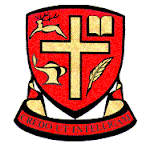“There is no more Vendée. It died with its wives and its children by our free sabres. I have just buried it in the woods and the swamps of Savenay. According to the orders that you gave me, I crushed the children under the feet of the horses, massacred the women who, at least for these, will not give birth to any more brigands. I do not have a prisoner to reproach me. I have exterminated all. The roads are sown with corpses. At Savenay, brigands are arriving all the time claiming to surrender, and we are shooting them non-stop... Mercy is not a revolutionary sentiment."
So wrote Francois Joseph Westerman, Brigadier General of the Revolutionary Government of France to the Paris “Committee of Public Safety”.
What crime had these “brigands” commited? For what were they crushed, massacred, and exterminated?
Would you like to know? As far as I can tell, these peasants died for their pastors. Yes, it is shocking. Shocking, because I cannot think of another instance where an entire province submitted to massacre for the sake of the men who administer Word and Sacrament. It is likely true that more factors played a part of the La Vendean uprising than "The Civil Constitution of the Clergy" – for instance, the levy of men imposed on all French provinces. But the demands on their priests pushed the peasants over the edge; they would not surrender either their physical or spiritual fathers to the bloody “mercy” of a revolutionary government which did not posses that sentiment.
So the peasantry did something unprecedented in the history of revolts, uprisings and revolutions (at least unprecedented as far as my meagre knowledge is concerned). They appealed to the aristocracy, their lords, for help. The entire province banded together to resist Parisian violence.
.png)
But the revolt was doomed before it had begun. Consider the odds: the whole of France versus La Vendee. The proponents of “Liberte, Egalite, and Fraternite” wiped out all dissidents and rinsed the rag afterward. Even the soil was scorched. General Westerman speaks for himself; I need not add to his eloquence.
I have a dream: To research the full history of La Vendee – to understand what happened and why Vendee fought to the death for their clergy and lords. The few facts I know are mind-boggling, (mostly a result of reading G. A. Henty and Wikipedia) but they remain obscure. Not a single history book will inform you that in the days when all France threw off both rule and religion, a province of Frenchmen fought back – and peasant Frenchman at that! This is a dream that will likely never materialize, but once my curiosity is roused, who knows what will happen... (I guess the biggest barrier would be learning French to read source materials) .
Currently, I am looking for the memoirs of the Marquise de la Rochejacquelein, the wife of the Marquis Henri de la Rochejacquelein - a young Vendean noble (the youngest commander in the Royal Catholic Army, as the Vendean insurrectionists styled themselves). [The image below is Henri de La Rochejacquelein at the Battle of Cholet in 1793 by Paul-Emile Boutigny, (19th C.), Musée d'art et d'histoire de Cholet, Cholet, France.]

So far I have found only one copy and that at a Catholic University. Ah, well, I’ll keep looking. And will try Interlibrary loan.
Currently, I am looking for the memoirs of the Marquise de la Rochejacquelein, the wife of the Marquis Henri de la Rochejacquelein - a young Vendean noble (the youngest commander in the Royal Catholic Army, as the Vendean insurrectionists styled themselves). [The image below is Henri de La Rochejacquelein at the Battle of Cholet in 1793 by Paul-Emile Boutigny, (19th C.), Musée d'art et d'histoire de Cholet, Cholet, France.]

So far I have found only one copy and that at a Catholic University. Ah, well, I’ll keep looking. And will try Interlibrary loan.
All links and images are from Wikipedia. (Yeah, I realize that that's a real historical source..)





.png)

3 comments:
That's really intersting!
(I am woefully ignorant of my history)
just of your history?
nope :)
Much, much more
Post a Comment